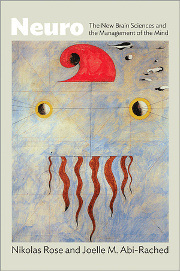Tom Stafford's Blog, page 43
December 2, 2013
Why the stupid think they’re smart
Psychologists have shown humans are poor judges of their own abilities, from sense of humour to grammar. Those worst at it are the worst judges of all.
You’re pretty smart right? Clever, and funny too. Of course you are, just like me. But wouldn’t it be terrible if we were mistaken? Psychologists have shown that we are more likely to be blind to our own failings than perhaps we realise. This could explain why some incompetent people are so annoying, and also inject a healthy dose of humility into our own sense of self-regard.
In 1999, Justin Kruger and David Dunning, from Cornell University, New York, tested whether people who lack the skills or abilities for something are also more likely to lack awareness of their lack of ability. At the start of their research paper they cite a Pittsburgh bank robber called McArthur Wheeler as an example, who was arrested in 1995 shortly after robbing two banks in broad daylight without wearing a mask or any other kind of disguise. When police showed him the security camera footage, he protested “But I wore the juice”. The hapless criminal believed that if you rubbed your face with lemon juice you would be invisible to security cameras.
Kruger and Dunning were interested in testing another kind of laughing matter. They asked professional comedians to rate 30 jokes for funniness. Then, 65 undergraduates were asked to rate the jokes too, and then ranked according to how well their judgements matched those of the professionals. They were also asked how well they thought they had done compared to the average person.
As you might expect, most people thought their ability to tell what was funny was above average. The results were, however, most interesting when split according to how well participants performed. Those slightly above average in their ability to rate jokes were highly accurate in their self-assessment, while those who actually did the best tended to think they were only slightly above average. Participants who were least able to judge what was funny (at least according to the professional comics) were also least able to accurately assess their own ability.
This finding was not a quirk of trying to measure subjective sense of humour. The researchers repeated the experiment, only this time with tests of logical reasoning and grammar. These disciplines have defined answers, and in each case they found the same pattern: those people who performed the worst were also the worst in estimating their own aptitude. In all three studies, those whose performance put them in the lowest quarter massively overestimated their own abilities by rating themselves as above average.
It didn’t even help the poor performers to be given a benchmark. In a later study, the most incompetent participants still failed to realise they were bottom of the pack even when given feedback on the performance of others.
Kruger and Dunning’s interpretation is that accurately assessing skill level relies on some of the same core abilities as actually performing that skill, so the least competent suffer a double deficit. Not only are they incompetent, but they lack the mental tools to judge their own incompetence.
In a key final test, Kruger and Dunning trained a group of poor performers in logical reasoning tasks. This improved participants’ self-assessments, suggesting that ability levels really did influence self-awareness.
Other research has shown that this “unskilled and unaware of it” effect holds in real-life situations, not just in abstract laboratory tests. For example, hunters who know the least about firearms also have the most inaccurate view of their firearm knowledge, and doctors with the worst patient-interviewing skills are the least likely to recognise their inadequacies.
What has become known as the Dunning-Kruger effect is an example of what psychologists call metacognition – thinking about thinking. It’s also something that should give us all pause for thought. The effect might just explain the apparently baffling self belief of some of your friends and colleagues. But before you start getting too smug, just remember one thing. As unlikely as you might think it is, you too could be walking around blissfully ignorant of your ignorance.
This is my BBC Future column from last week. The original is here.


December 1, 2013
A quarter century of All in the Mind
 A new series of BBC Radio 4′s All in the Mind has just kicked off and to celebrate 25 years of broadcasting they’ve just had three great episodes looking back on the last quarter century of psychology, neuroscience and mental health.
A new series of BBC Radio 4′s All in the Mind has just kicked off and to celebrate 25 years of broadcasting they’ve just had three great episodes looking back on the last quarter century of psychology, neuroscience and mental health.
Each make for a interesting discussion of how science and attitudes have changed.
As per BBC usual, you can access the streamed versions at the links above, but you have to go to an entirely separate page for the podcasts.
And because there are no separate podcast pages for specific episodes, I’ve linked them directly below. Here’s hoping that in the next 25 years, the BBC can fix their website.
mp3 of ’25 years of understanding the brain’
mp3 of ‘What has psychology research taught us in the last 25 years?’
mp3 of ‘How have attitudes to mental health changed in the last 25 years?’


November 30, 2013
Neuroscience and its place in the social world
 This is the first of three posts that will cover three important books about how the science of mind, brain and mental health, interfaces with society at large.
This is the first of three posts that will cover three important books about how the science of mind, brain and mental health, interfaces with society at large.
First off, I want to discuss an excellent book called Neuro: The New Brain Sciences and the Management of the Mind published this year by sociologists of neuroscience Nikolas Rose and Joelle M. Abi-Rached.
You may be wondering why we need a social study of neuroscience but it becomes clear when we think of how neuroscience has become important.
It is not just due to what has been discovered. Neuroscience research itself, is only driven in part by scientific discovery.
In the main part, it is driven by a complex mix of politics, business, health care needs and public popularity. That’s what provides the funds and makes the scientific discovery possible and this only moderately, some would say weakly, relates to how far we ‘advance’ in terms of learning.
There is also a common idea that discoveries from psychology and neuroscience form the basis of interventions or changes to society, but much of the time, discoveries from psychology and neuroscience are co-opted to justify changes based on social values.
Here’s a really good example from p196 from the chapter on ‘The Antisocial Brain’ that discusses how the neuroscience of plasticity, the adolescent brain and child psychopathology has been used to justify family interventions.
By way of the brain, then, we reach a conclusion that does not differ greatly from arguments reaching back to the late nineteenth century about the effects of the early years on later propensities to problematic conduct.
From Mary Carpenter’s campaigns for colonies for dangerous and perishing children, through the social problem group and “the submerged ten percent” in the early twentieth century, via the mental hygiene movement in the 1930s, and arguments for setting up child welfare services in the years after the Second World War, to the contentious concept of the “cycle of deprivation” in the 1970s, and the interventions of the Head Start program to the Sure Start program – we find repeated arguments that one should minimize a host of social ills, including criminal and antisocial conduct, by governing the child through the family.
In each generation, unsurprisingly, these arguments are made on the basis of whatever happens to be the current mode of objectivity about the development of children – habits, the will, instinct theory, psychoanalysis, and today the brain.
Each time, the scientific programme is received as if it is a new approach to the problem of child deprivation and delinquency, when the success of these programmes lies precisely in the fact that they are largely the same. In this case, based on the idea that the family is the primary point of responsibility and intervention for poor adolescent behaviour.
Similarly, the success of neuroscientific approaches to problems often depends on how acceptable the implications would seem to potential funders because the money has usually to be agreed before significant lines of inquiry can be started.
This is why non-medical behavioural genetics research gets such as hard time. It’s not that it’s necessarily worse science in terms of its empirical methods but it reminds people of unsavoury practices like eugenics that run counter to prevailing values.
Neuro tracks exactly these sorts of interactions through history and between prevailing current interests. It is also brilliant technically, however, and you will actually learn a great deal about neuroscience methods from the book.
From the history and development of brain scanning techniques, to psychiatric drugs, to the rhetorical role of animal models in understanding mental illness, to how our notion of ourselves is changing in light of advances in brain sciences – it’s remarkably wide in scope.
Sociology is famous for its gobbledebook jargon, and this book has none of this, but its only drawback is that it is, in the end, an academic book and is sometimes written without much thought for the general reader.
But if you can tolerate the academic language, it is essential reading. If you want to understand neuroscience – rather than just facts about neuroscience – Neuro is probably one of the most important books you could read.
And the same goes if you are a neuroscientist or just interested in how we, as a society, are integrating the study of the brain into how we live.
Next in this three-part Mind Hacks series on science and society – Ben Goldacre’s Bad Pharma.
Link to more details about Neuro.


2013-11-29 Spike activity
Quick links from the past week in mind and brain news:

Science News reports on a ‘brain training’ app that actually seems to be a data gathering tool for big data neuropsychology research. Interesting if not a bit ethically dubious.
The US Military’s science wing DARPA wants to fix broken brains and restore lost memories. Interview with deputy director in Science.
Wired Science launches a new neuroscience blog called Brain Watch written by Mind Hacks alumnus Christian Jarrett.
Important piece in Nature about the Many Labs Project which did a mass replication of psychology studies find 10 out of 13 held up.
Slate has an excellent, explicit discussion of the results from the UK’s National Survey of Sexual Attitudes and Lifestyles.
Neurobonkers has an excellent piece reviewing the psychological biases that affect forensic science analyses.
Robots, the ‘uncanny valley’ and identity. Interesting piece in The Telegraph.
The Las Vegas Sun reports on a couple being released from prison after 21 years as evidence for ‘ritual satanic abuse’ based on ‘recovered memories’ and un-validated physical examinations is deemed to be flawed.
A new NeuroPod podcast has hit the wires – this one being a special from the 2013 Society for Neuroscience conference.
Discover magazine reports on a study finding that surprisingly, the more two negotiators match each other’s language styles, the worse things are likely to go.


November 28, 2013
Extending new senses through implanted magnets
 In 2006, journalist Quinn Norton had a magnet implanted in her finger so she could ‘sense’ magnetic fields.
In 2006, journalist Quinn Norton had a magnet implanted in her finger so she could ‘sense’ magnetic fields.
An article on the ABC Radio National website shows how this simple concept has been taken to its next level by the body modification community to find new ways of integrating magnetic fields into our senses.
Before I was prepped to have a magnet inserted in my fingertip, I had a conversation with my piercer, Kyla Fae, about placement…
I had thought that the only possibility was the finger, but apparently there are many fleshy parts of the body that are viable placement options.
‘I haven’t performed any in genitals, but I’m well aware of people with them,’ said Ms Fae.
‘If you’ve got a magnet in your lady garden or whatever, it will vibrate away near big speakers.’..
Some enthusiasts are also starting to get magnets that act as mini speakers implanted next to their ear. All it takes is a magnetic coil disguised as a necklace, an amplifier and MP3 player to have music piped straight to your brain.
Now imagine that in an MRI scanner. Fast Spin Echo sequence for the win.
Link to ‘Taking body modification to the extreme’.


Do violent video games make teens ‘eat and cheat’ more?
By Tom Stafford, University of Sheffield
The Headlines
Business Standard: Violent video games make teens eat more, cheat more
Scienceblog.com: Teens ‘Eat more, cheat more’ after playing violent video games
The Times of India: Violent video games make teens cheat more
The story
Playing the violent video game Grand Theft Auto made teenagers more aggressive, more dishonest and lowered their self control.
What they actually did
172 Italian high school students (age 13-19 years old), about half male and half female, took part in an experiment in which they first played a video game for 35 minutes. Half played a non-violent pinball or golf game, and half played one of the ultra-violent Grand Theft Auto games.
During the game they had the opportunity to eat M&M’s freely from a bowl (the amount they scoffed provided a measure of self-control), and after the game they had the opportunity take a quiz to earn raffle tickets (and the opportunity to cheat on the quiz, which provided a measure of dishonesty). They also played a game during which they could deliver unpleasant noises to a fellow player as punishments (which was used to measure of aggression).
Analysis of the results showed that those who played the violent video game had lower scores when it came to the self-control measure, cheated more and were more aggressive. What’s more, these effects were most pronounced for those who had high scores on a scale of “moral disengagement” – which measures how loose your moral thinking is. In other words, if you don’t think too hard about right and wrong, you score highly.
How plausible is this?
This is a well designed study, which uses random allocation to the two groups to try to properly assess causation (does the violent video game cause immoral behaviour?).
The choice of control condition was reasonable (the other video games were tested and found to be just as enjoyed by the participants), and the measures are all reasonable proxies for the things we are interested in. Obviously you can’t tell if weakened self-control for eating chocolate will mean weakened self-control for more important behaviour, but it’s a nice specific measure which is practical in an experiment and which just might connect to the wider concept.
The number of participants is also large enough that we can give the researchers credit for putting in the effort. Getting about 85 people in each group should give a minimum of statistical power, which means any effects might be reliable.
As an experimental psychologist, there’s lots for me to like about this study. The only obvious potential problem that I can see is that of demand effects, subtle cues that can make participants aware of what the experimenter expects to find or how they should behave. The participants were told they were in a study which looked at the effects of video games, so it isn’t impossible that some element of their behaviour was playing up to what they reasonably guessed the researchers were looking for and it doesn’t look like the researchers checked if this might be the case.
Tom’s take
You can’t leap to conclusions from a single study, of course – even a well designed one. We should bear in mind the history of moral panics around new technology and media. Today we’re concerned with violent video games, 50 years ago it was comic books and jazz. At least jazz is no longer corrupting young people.
Is our worry about violent video games just another page in the history of adults worrying about what young people are up to? That’s certainly a factor, but unlike jazz, it does seem psychologically plausible that a game where you enjoy reckless killing and larceny might encourage players to be self-indulgent and nasty.
Reviews suggest violent media may be a risk factor for violent behaviour, just like cigarette smoke is a risk factor for cancer. Most people who play video games won’t commit violent acts, just like most people who passive smoke won’t get cancer.
The problem is other research reviews into impact of violent entertainment on our behaviour suggest the evidence for a negative effect is weak and contradictory.
Video games are a specific example of the general topic of if and how media affect our behaviour. Obviously, we are more than complete zombies, helpless to resist every suggestion or example, but we’re also less than completely independent creatures, immune to the influence of other people and all forms of entertainment. Where the balance lies between these extremes is controversial.
For now, I’m going to keep an open mind, but as a personal choice I’m probably not going to get the kids GTA for Christmas.
Read more
The original paper: Interactive Effect of Moral Disengagement and Violent Video Games on Self-Control, Cheating, and Aggression
@PeteEtchells provides a good summary of the scientific (lack of) consensus: What is the link between violent video games and aggression?
Commentary by one researcher on the problems in the field of video game research: The Challenges of Accurate Reporting on Video Game Research
And a contrary research report: A decade long study of over 11,000 children finds no negative impact of video games
Tom Stafford does not work for, consult to, own shares in or receive funding from any company or organisation that would benefit from this article, and has no relevant affiliations.

This article was originally published at The Conversation.
Read the original article, or other columns in the series


November 26, 2013
You are a data series in a profit-making algorithm
 If you only read one psychology article in the next few months, make it the startling and unsettling Atlantic piece on how ‘people analytics’ is being applied to managing, selecting, and promoting employees.
If you only read one psychology article in the next few months, make it the startling and unsettling Atlantic piece on how ‘people analytics’ is being applied to managing, selecting, and promoting employees.
The idea behind people analytics is that job performance can be measured and predicted by analysing the huge amount of behavioural data generated by the digital tools we use or from specifically designed online tests.
The prediction part comes from analysing data across employees to find out, for example, what characteristics best predict a good team leader, or a poor performer, or someone who needs a specific sort of support or intervention to develop.
The potential power of this data-rich approach is obvious. What begins with an online screening test for entry-level workers ends with the transformation of nearly every aspect of hiring, performance assessment, and management. In theory, this approach enables companies to fast-track workers for promotion based on their statistical profiles; to assess managers more scientifically; even to match workers and supervisors who are likely to perform well together, based on the mix of their competencies and personalities. Transcom plans to do all these things, as its data set grows ever richer. This is the real promise—or perhaps the hubris—of the new people analytics. Making better hires turns out to be not an end but just a beginning. Once all the data are in place, new vistas open up.
In other words, the idea is to develop software that can identify predictors of specific behaviours and use them as the basis of management decisions.
Essentially, you have become a data series in a profit-making algorithm.
It is an important and fascinating article that is worth reading in full as it heralds a future of human resources that will be driven by ultra-personal data.
Link to Atlantic article ‘They’re Watching You at Work’.


November 23, 2013
2013-11-23 Spike activity
Quick links from the past week in mind and brain news:

Prosthetics to replace amputated hands can fall into the uncanny valley reports Science News.
The New York Times covers the nascent science of female aggression.
Can gambling machines prevent addiction? asks Scientific American Mind. Answer: of course. Will they? No.
NPR has an excellent piece by neuroscientist Tania Lombroso on whether pictures of brain scans have persuasive power. Only sometimes, it turns out.
The Dream Catcher. Matter has an in-depth piece about sadly over-hippied but genuinely fascinating subject of lucid dreaming.
io9 covers the psychology experiment that led to the phrase “thinking outside the box”.
Brain scans teach us nothing of morality says philosopher of mind Thomas Nagel in a street-fighting review of Joshua Greene’ new book.
NPR reports that your chance is being murdered is heavily to who you have in your social network.
Neuroscientist Kate Mills sets out a programme for understanding the interaction between networked culture and the adolescent brain in a talk from the Serpentine Gallery.


November 20, 2013
A ray directly from “Delhi University”
 A series of ‘bizarre delusions’ from patients diagnosed with schizophrenia described in a new paper just published in the Indian Journal of Psychological Medicine:
A series of ‘bizarre delusions’ from patients diagnosed with schizophrenia described in a new paper just published in the Indian Journal of Psychological Medicine:
“Some rays are there in me, which create magnetic field and I have the power to affect TV signals. Body is producing charge; whenever I touch anything I get electric current. Some heavenly body comes and makes me powerful and communicates with me.”
“My hands are changed into cat’s paws.”
“I have some special power, if I call the Sun then it will come to me, whenever I look at the Sun, it smiles back at me.”
“My rib-cage is left behind in the bathroom; while I was bathing it got washed away.”
“The heart is moving round the clock in different areas of the trunk.”
“A ray directly from “Delhi University (DU)” used to teach me the engineering course.”
Delusions are one of the central symptoms of psychosis and despite the fact that they can be both distressing and disabling, are often quite amazing in their complexity and content.
Link to article from Indian Journal of Psychological Medicine.


November 17, 2013
Listening for the voices of the dead
 I’ve got an article in The Observer about our tendency to perceive meaning where there is none and how this inadvertently popped up in one of the strangest episodes in the history of psychology.
I’ve got an article in The Observer about our tendency to perceive meaning where there is none and how this inadvertently popped up in one of the strangest episodes in the history of psychology.
The article discuss the work of psychologist Konstantīns Raudive who began to believe that he could hear the voices of the dead amid the hiss of radio static – after, it must be said, much re-recording and amplification of the samples.
He wrote a 1971 book called Breakthrough where he explained his technique which was even accompanied by a flexidisc that has lots of not very convincing examples of the dead speaking through noise. You can listen to it on YouTube if you’re so inclined.
He gained widespread media attention but subsequent scientific studies found that everyone was hearing something different amid the static, making it one of the most well-know examples of illusory meaning or pareidolia of its time.
However, the experience of illusory meaning has become widely studied for its relationship to magical thinking and hallucination but was even recently deployed as a practical tool for the assessment of dementia.
More in the full article at the link below. It’s been given a somewhat odd title but hopefully, it should be fairly self-explanatory.
Link to Observer article on illusory meaning.


Tom Stafford's Blog
- Tom Stafford's profile
- 13 followers



